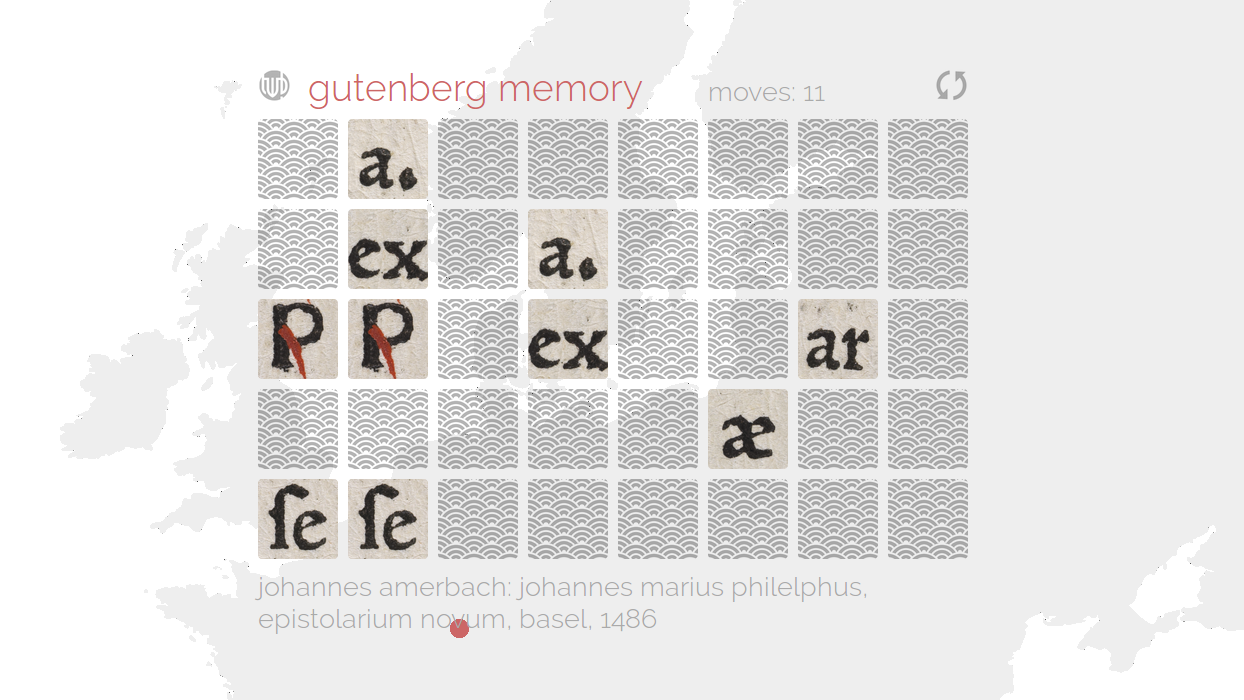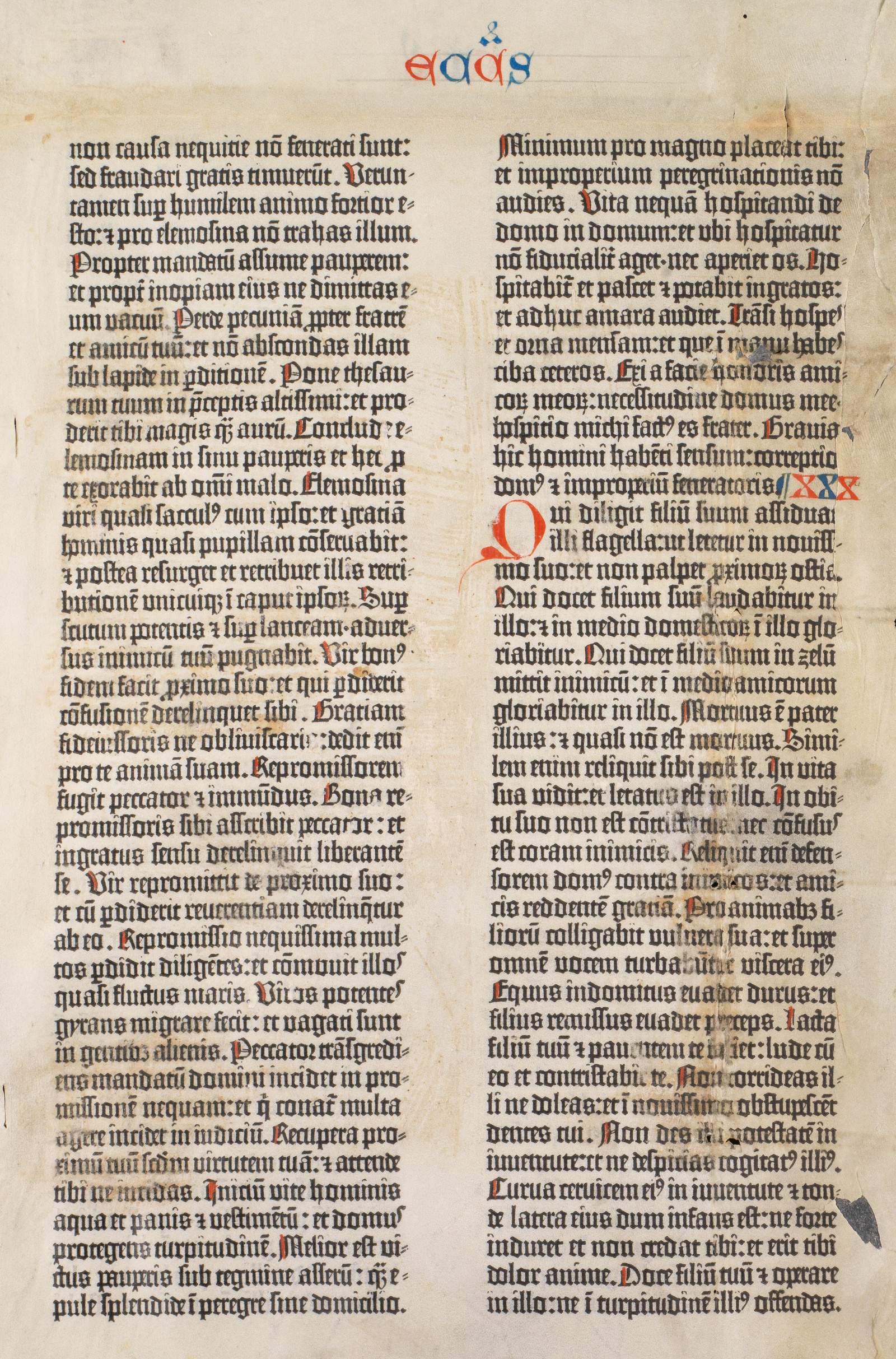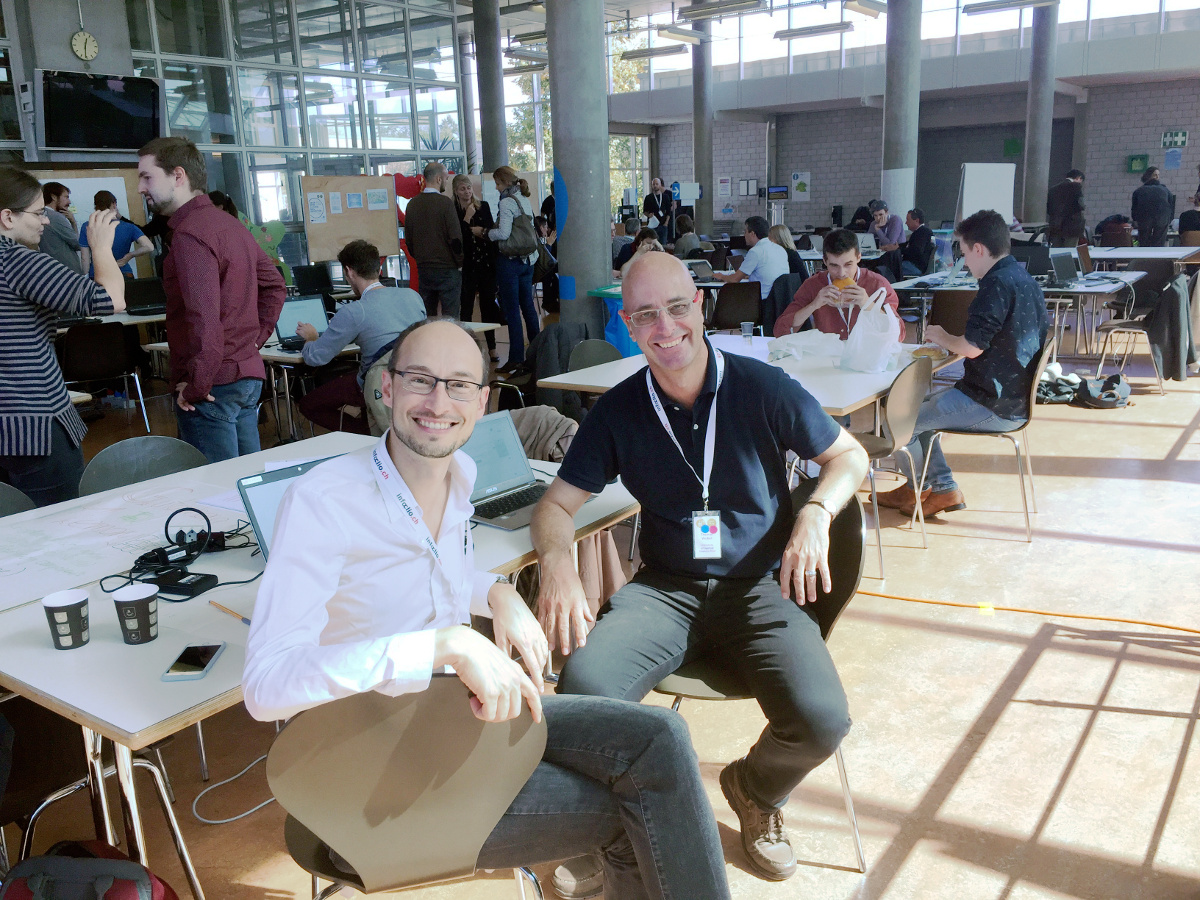Hacking Gutenberg
A Moveable Type Game
The internet and the world wide web are often referred to as being disruptive. In fact, every new technology has a disruptive potential. 550 years ago the invention of the modern printing technology by Johannes Gutenberg in Germany (and, two decades later, by William Caxton in England) was massively disruptive. Books, carefully bound manuscripts written and copied by scribes during weeks, if not months, could suddenly be mass-produced at an incredible speed. As such the invention of moveable types, along with other basic book printing technologies, had a huge impact on science and society.
And yet, 15th century typographers were not only businessmen, they were artists as well. Early printing fonts reflect their artistic past rather than their industrial potential. The font design of 15th century types is quite obviously based on their handwritten predecessors. A new book, although produced by means of a new technology, was meant to be what books had been for centuries: precious documents, often decorated with magnificent illustrations. (Incunables -- books printed before 1500 -- often show a blank square in the upper left corner of a page so that illustrators could manually add artful initials after the printing process.)
Memory, also known as Match or Pairs, is a simple concentration game. Gutenberg Memory is an HTML 5 adaptation of the common tile-matching game. It can be played online and works on any device with a web browser. By concentrating on the tiles in order to remember their position the player is forced to focus on 15th (or early 16th) century typography and thus will discover the ageless elegance of the ancient letters.
Gutenberg Memory, Screenshot
Johannes Gutenberg: Biblia latina, part 2, fol. 36
Gutenberg Memory comes with 40 cards (hence 20 pairs) of syllables or letter combinations. The letters are taken from high resolution scans (>800 dpi) of late medieval book pages digitized by the university library of Basel. Given the original game with its 52 cards (26 pairs), Gutenberg Memory has been slightly simplified. Nevertheless it is rather hard to play as the player's visual orientation is constrained by the cards' typographic resemblance.
In addition, the background canvas shows a geographical map of Europe visualizing the place of printing. Basic bibliographic informations are given in the caption below, including a link to the original scan.
Instructions
Click on the cards in order to turn them face up. If two of them are identical, they will remain open, otherwise they will turn face down again. A counter indicates the number of moves you have made so far. You win the game as soon as you have successfully found all the pairs. Clicking (or tapping) on the congratulations banner, the close button or the restart button in the upper right corner will reshuffle the game and proceed to a different font, the origin of which will be displayed underneath.
Updates
2017/09/15 v1.0: Prototype, basic game engine (5 fonts)\ 2017/09/16 v2.0: Background visualization (place of printing)\ 2017/09/19 v2.1: Minor fixes
Data
Wikimedia Commons, 42-zeilige Gutenbergbibel, Teil 2, Blatt 36, Mainz, 1454-1455
Wikimedia Commons, 42-zeilige Gutenbergbibel, Teil 2, Blatt 35, Detail
Wikimedia Commons, Adam Petri, Martin Luther, Das Alte Testament deutsch, Basel, 1523-1525
Wikimedia Commons, Aldus Manutius, Horatius Flaccus, Opera, Venedig, 1501
Wikimedia Commons, Johannes Amerbach, Johannes Marius Philelphus, Epistolarium novum, Basel, 1486
Wikimedia Commons, Hieronymus Andreae, Albrecht Dürer, Underweysung der messung mit dem zirckel, Nürnberg 1525
Team
Elias Kreyenbühl (left), Thomas Weibel at the «Génopode» building on the University of Lausanne campus.
- Prof. Thomas Weibel, Thomas Weibel Multi & Media, University of Applied Sciences Chur
- Dr. des. Elias Kreyenbühl, University Library of Basel



